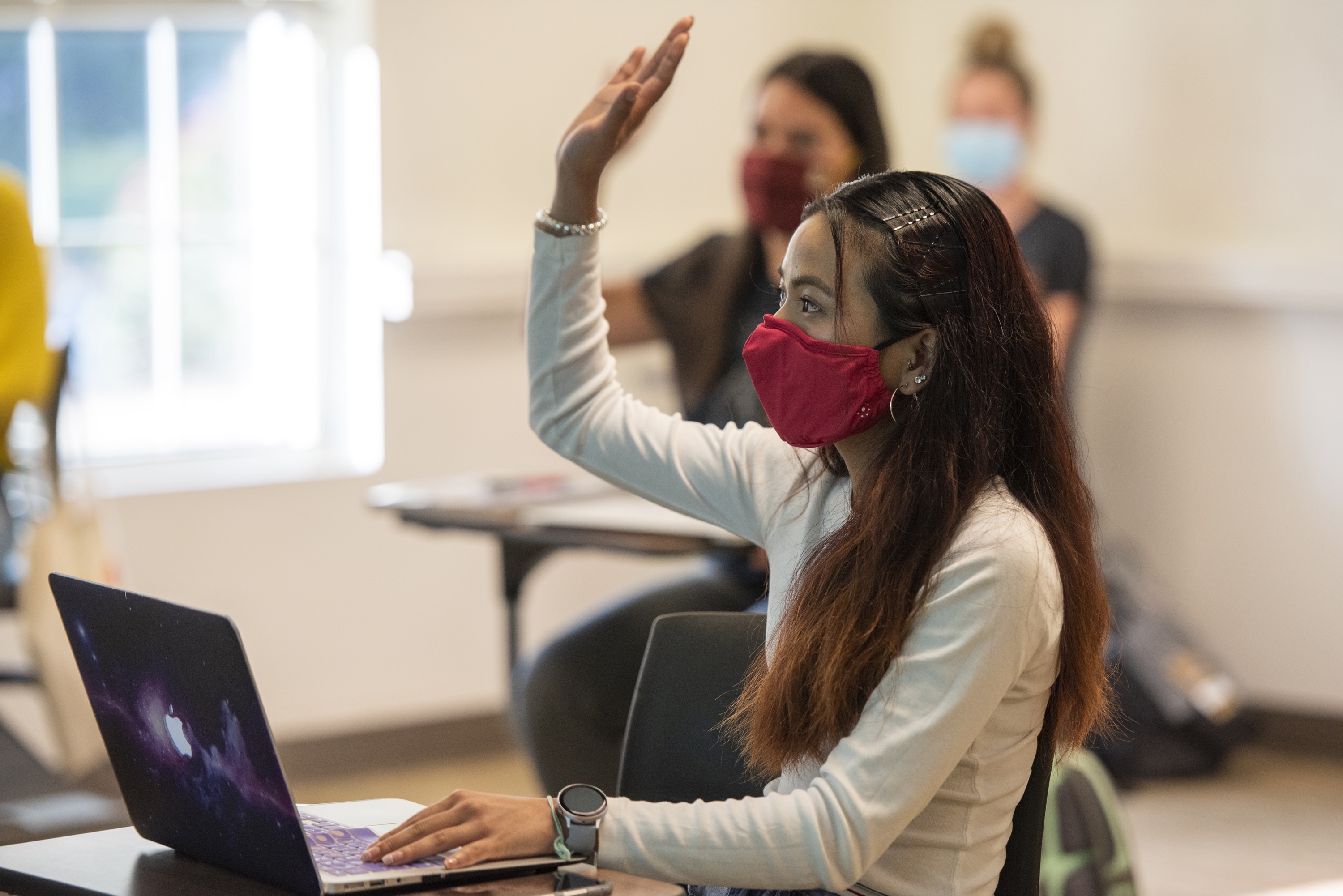The chapter explores how emergency remote teaching reshaped both the faculty and student perspectives on the learning process.
Sophie Grabiec, managing editor at the Center for Engaged Learning, co-authored a chapter in a new edited collection on reimagining teaching and learning in the wake of the COVID-19 pandemic. Published in December, “Recentering Learning” was edited by Maggie Debelius, Joshua Kim and Edward Maloney. Grabiec co-authored the chapter, “Learning about Learning: Students’ Insights from a Pandemic Year,” under the mentorship of Professor Sherry Linkon at Georgetown University.
The chapter explores how emergency remote teaching reshaped both the faculty and student perspectives on the learning process. The pandemic forced a shift in traditional teaching methods, challenging assumptions about engagement, course design, and assessment. Linkon framed the chapter with a critical observation: while many faculty members recognized the need to adapt their teaching strategies, students were equally perceptive in identifying what worked and what didn’t during this transformative period.
Linkon invited Grabiec and two of her peers, Isabel McHenry and Lillian Nagengast— students actively engaged in education research — to reflect on their experiences. Their contributions highlighted how emergency remote teaching emphasized the importance of intentional course design and engagement.
Grabiec’s reflections emphasized the loss of informal pre- and post-class interactions, which had previously fostered connection and engagement. This gap prompted her to consider how “prepping for class” could be reimagined to make homework more meaningful. By encouraging deeper preparation before class, students could engage in more thoughtful discussions during class time.
She also recounted a pivotal experience with a professor who restructured the traditional final essay assignment to accommodate pandemic-induced stressors. Instead of a single, high-stakes essay, the professor guided students through a reflective process, asking them to outline their argumentative plans and develop ideas incrementally. This slower, more deliberate approach proved effective in fostering meaningful learning and reducing pressure.
Ultimately, the chapter underscores a shared lesson from the pandemic: slowing down and rethinking how we teach and learn can lead to more impactful educational experiences. The insights gained during this unprecedented period remain relevant as educators and students navigate a return to in-person learning, proving that some lessons from the pandemic are worth holding onto.
Recentering Learning serves as both a reflection on a pivotal moment in education and a guide for building more inclusive, thoughtful and effective teaching practices in the future.



